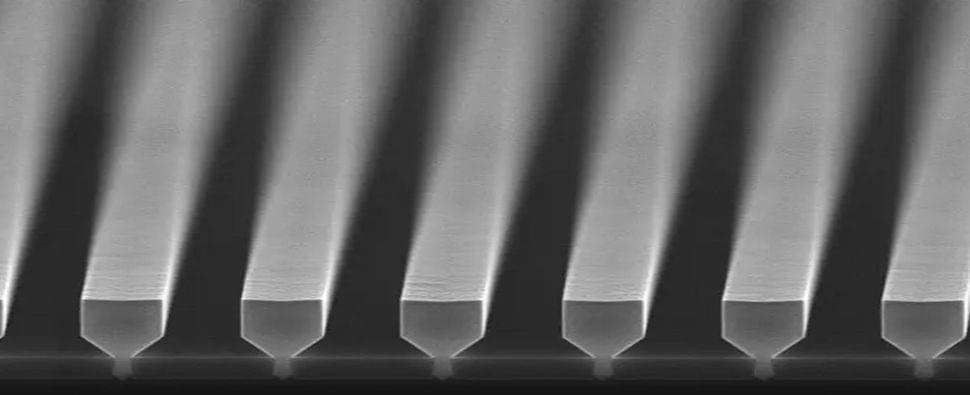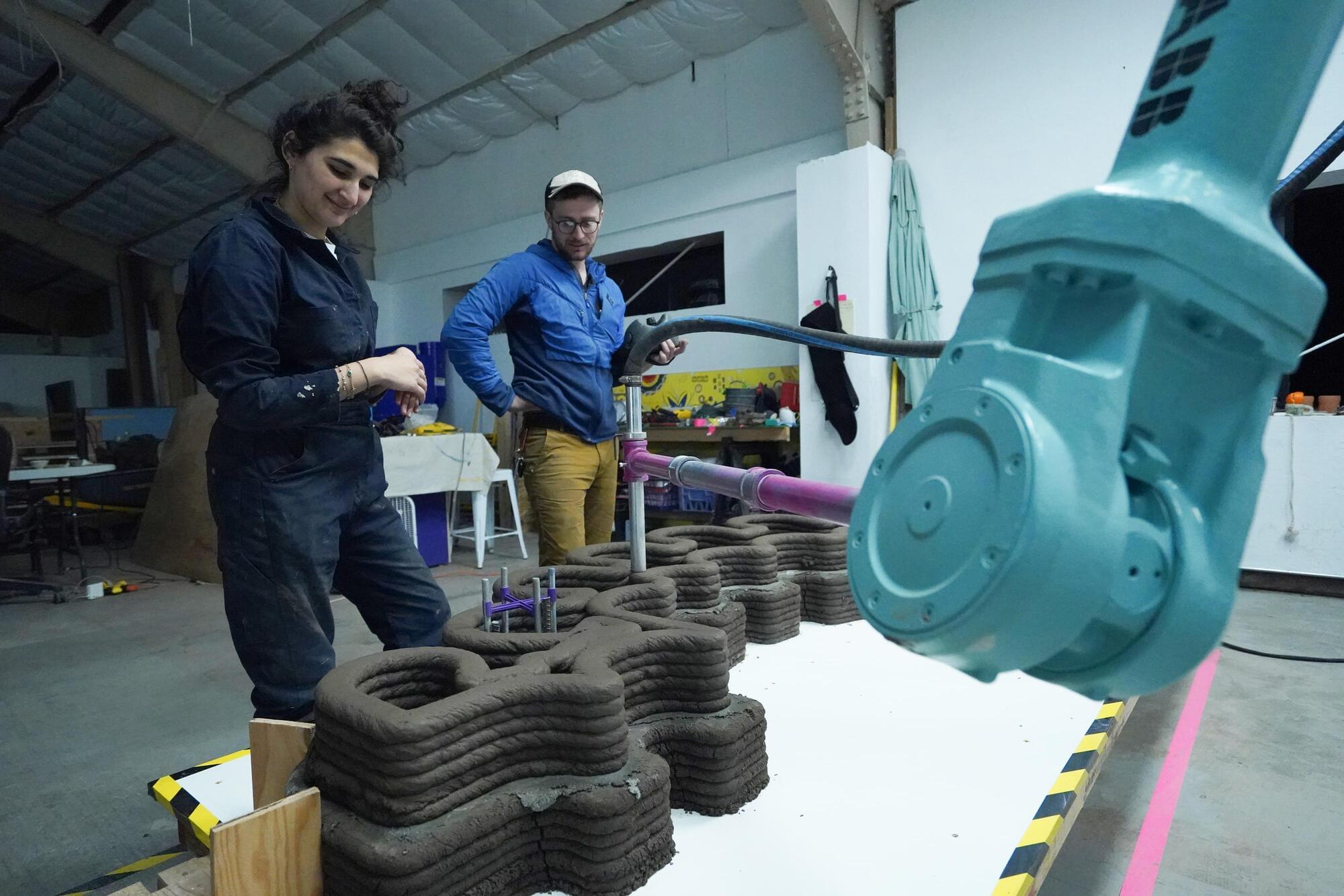The lasers currently have a short wavelength, but Imec is looking to change that.



In today’s AI news, Backed by $200 million in funding, Scott Wu and his team at Cognition are building an AI tool that could potentially disintegrate the whole industry, at a $2 Billion valuation. Devin is an autonomous AI agent that, in theory, writes the code itself—no people involved—and can complete entire projects typically assigned to developers.
In other advancements, OpenAI is changing how it trains AI models to explicitly embrace “intellectual freedom … no matter how challenging or controversial a topic may be,” the company says in a new policy. OpenAI is releasing a significantly expanded version of its Model Spec, a document that defines how its AI models should behave — and is making it free for anyone to use or modify.
Then, xAI, the artificial intelligence company founded by Elon Musk, is set to launch Grok 3 on Monday, Feb. 17. According to xAI, this latest version of its chatbot, which Musk describes as “scary smart,” represents a major step forward, improving reasoning, computational power and adaptability. Grok 3’s development was accelerated by its Colossus supercomputer, which was built in just eight months, powered by 100,000 Nvidia H100 GPUs.
And, large language models can learn complex reasoning tasks without relying on large datasets, according to a new study by researchers at Shanghai Jiao Tong University. Their findings show that with just a small batch of well-curated examples, you can train an LLM for tasks that were thought to require tens of thousands of training instances.
S new o1 model, which focuses on slower, more deliberate reasoning — much like how humans think — in order to solve complex problems. ” + Then, join Turing Award laureate Yann LeCun—Chief AI Scientist at Meta and Professor at NYU—as he discusses with Link Ventures’ John Werner, the future of artificial intelligence and how open-source development is driving innovation. In this wide-ranging conversation, LeCun explains why AI systems won’t “take over” but will instead serve as empowering assistants.
Meanwhile, when confronted with a constant stream of new AI tools, it can be stressful to make the best choice, especially with hype of “the next big thing. In the opening keynote from the Gartner IT Infrastructure, Operations & Cloud Strategies Conference, Gartner experts Autumn Stanish, Hassan Ennaciri and Roger Williams equip you with insights and guidance on the AI, cloud and platform trends.
We close out with expert panel, at AI House, led by Moderator Mina Al-Oraibi, The National delves into how a globally integrated AI ecosystem can revolutionize smart cities by enhancing efficiency, sustainability, and citizen well-being. Panelists include; Thomas Pramotedham Presight, Juan Lavista Ferres, Microsoft AI For Good Research Lab, Guillem Martínez Roura, International Telecommunications Union, and Anna Gawlikowska, SwissAI.
A worldwide MASS BAN of DeepSeek AI has just begun, and the implications are shocking! Governments, corporations, and AI regulators are now cracking down on one of the fastest-growing AI models, sparking intense debates about AI safety, censorship, and control. But why is DeepSeek AI being banned, and what does this mean for the future of artificial intelligence?
In this video, we break down why countries are banning DeepSeek AI, the real reasons behind this massive restriction, and what this means for the AI industry and everyday users. Is this about security risks, misinformation, or something even bigger? And how will OpenAI, Google, and other tech giants respond to this sudden AI crackdown?
With the AI revolution accelerating faster than governments can regulate, this global ban on DeepSeek could signal the beginning of tighter AI control worldwide. But is this about protecting people—or protecting power? Watch till the end to find out!
Why is DeepSeek AI being banned? What does this mean for the future of AI? Is this the start of global AI censorship? This video will answer all these questions and more—so don’t miss it!
#ai.
#artificialintelligence.
#deepseek.
*******************
2-minute pitch for my startup Cathedral Therapeutics (co-founded with David Curiel)! If you’re interested, please feel free to reach out.
Cathedral’s novel technology protects adeno-associated virus (AAV) gene therapies from the immune system so that all patients can access the life-changing cures they need. We encapsulate AAVs inside of hollow organelles found in human cells called protein vaults to make vaultAAV complexes. This approach shields the encapsulated AAVs from antibodies so that they can enter cells and deliver beneficial DNA. https://www.cathedraltherapeutics.com/

Neptune and Uranus are the seventh and eighth planets from the sun, and as such share a lot of the same characteristics. Though they are different colors (Neptune is bluer than Uranus’ cyan hue) and have different numbers of rings and moons, both planets are ice giants that are similar sizes at just over 30,000 miles (50,000 kilometers) wide each. They also weigh about the same, with Neptune coming in at 1.024 × 1026 kg (about 17 times the mass of Earth) and Uranus weighing 8.682 × 1025 kg (about 14 times the mass of Earth). What’s more, both planets have upper atmospheres made up of mostly hydrogen, helium, and methane. Put simply, then, the characteristics of Neptune and those of Uranus are very similar despite their different colors.
Now, it seems the two worlds could have yet another thing in common, and this one is particularly intriguing when compared with Earth. Neptune and Uranus might be home to some incredibly deep oceans that make our own look like puddles.
Earth’s own oceans are already mysterious enough. They cover roughly 70% of the planet’s surface, yet only a small portion of our ocean has been explored, with the Nippon Foundation-Gebco stating that as of June 2024, just 26.1% of the entire seafloor had been mapped. The deepest trench in the ocean, known as the Challenger Deep, sits beneath the western Pacific Ocean, southwest of the U.S. territorial island of Guam, and is roughly 35,876 feet deep. Just what life is like at such depths remains somewhat of a mystery, with the deep ocean already proving to be home to prehistoric sea animals that are, frankly, nothing short of nightmare fuel. But the deepest ocean trenches on Earth are absolutely nothing compared to the depths of the oceans that might well exist on Neptune and Uranus.

Buildings cost a lot these days. But when concrete buildings are being constructed, there’s another material that can make them less expensive: mud.
MIT researchers have developed a method to use lightly treated mud, including soil from a building site, as the “formwork” molds into which concrete is poured. The technique deploys 3D printing and can replace the more costly method of building elaborate wood formworks for concrete construction.
“What we’ve demonstrated is that we can essentially take the ground we’re standing on, or waste soil from a construction site, and transform it into accurate, highly complex, and flexible formwork for customized concrete structures,” says Sandy Curth, a PhD student in MIT’s Department of Architecture who has helped spearhead the project.

Engineers are renowned clock-problem solvers. They’re also notorious for treating every problem like a clock. Increasing specialization and cultural expectations play a role in this tendency. But so do engineers themselves, who are typically the ones who get to frame the problems they’re trying to solve in the first place.
In his latest book, Wicked Problems, Guru Madhavan argues that the growing number of cloudy problems in our world demands a broader, more civic-minded approach to engineering. “Wickedness” is Madhavan’s way of characterizing what he calls “the cloudiest of problems.” It’s a nod to a now-famous coinage by Horst Rittel and Melvin Webber, professors at the University of California, Berkeley, who used the term “wicked” to describe complex social problems that resisted the rote scientific and engineering-based (i.e., clock-like) approaches that were invading their fields of design and urban planning back in the 1970s.
Madhavan, who’s the senior director of programs at the National Academy of Engineering, is no stranger to wicked problems himself. He’s tackled such daunting examples as trying to make prescription drugs more affordable in the US and prioritizing development of new vaccines. But the book isn’t about his own work. Instead, Wicked Problems weaves together the story of a largely forgotten aviation engineer and inventor, Edwin A. Link, with case studies of man-made and natural disasters that Madhavan uses to explain how wicked problems take shape in society and how they might be tamed.

Are we living in a simulation, and if so, can we escape? This article explores Roman Yampolskiy’s radical ideas on hacking reality.
Earth is 4.5 billion years old… modern humans are only 300,000 years old. The history of our species on this planet is incredible, but there are theories that humankind is actually much more spread out across the universe!
This is Unveiled, giving you incredible answers to extraordinary questions!
Find more mind-bending videos here:
What If Humanity Was a Type II Civilization? — • What If Humanity Was A Type II Civili…
What If Humanity Was a Type IV Civilization? — • What If Humanity Was A Type IV Civili…
Are you constantly curious? Then subscribe for more from Unveiled — https://wmojo.com/unveiled-subscribe.
#Space #Science #WhatIf

“Just like tuning forks of different material will have different pure tones, remnants described by different equations of state will ring down at different frequencies,” Rezzolla said in a statement. “The detection of this signal thus has the potential to reveal what neutron stars are made of.”
Gravitational waves were first suggested by Albert Einstein in this 1915 theory of gravity, known as general relativity.